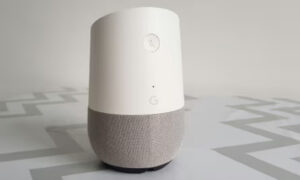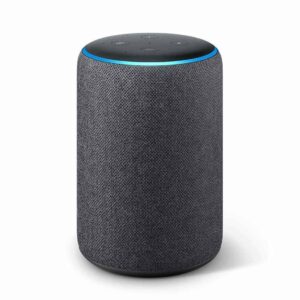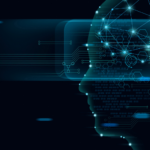During the last few years, Internet of Things (IoT) devices have started becoming a more and more important component in our daily lives.
The ‘Thing’ in IoT can be any device with any kind of built-in-sensors with the ability to collect and transfer data over a network without manual intervention. The embedded technology in the object helps to interact with internal states and the external atmosphere, which helps in decisions making process.
In short, The Internet Of Things (IOT) is the billions of physical devices around the world that are now connected to the internet, all collecting and sharing data.
As stated before, IOT is a giant network consisting of interconnected devices.
IoT devices have sensors embedded into them. These sensors are capable of sensing their environs. The devices store the information in some form of data. These devices such as mobile phones, coffee machines, microwaves, geysers, fire alarms, Air conditioners, cars and so on.
Here, we will learn about four key components of an IoT system:
1.Sensors/Devices:
These devices connect with the external physical environment. They collect the data from the outside changes and store this information. A sensor senses the changes in the environments and records these changes. This property makes sensors extremely useful in IoT applications.
2. Connectivity:
Cloud servers process the data that sensors collect. In order to do, they require platforms. Connectivity is the connection among all IoT devices in any given IOT ecosystem including sensors, routers, gateways, user applications and platforms.
Connectivity allows you to take control over the entire IOT system. So, it is crucial to select the right kind of connectivity path.
3. Data processing:
Once the entire data spreads to the platform, functions are performed on this data in order to process the data and send back necessary outputs.
4. User Interface:
This is the final stage. This stage is in direct contact with the user, and it gives the output that users see on their screen. Every IoT device has a different interface as each device has a different task or purpose to complete.

Some benefits of the Internet of Things:
1. Control over all gadgets:
when people manually work on separate computers for different operations, where we can monitor multiple things from one device. Almost all devices are linked to one device power, from controlling your regulator to tuning the TV volume and more.
2. Emerging Smart Cities:
IOT cities are also emerging, and IOT developers are now using IOT applications to monitor city conditions such as transit congestion, air quality, water, and environmental factors.
3. Comfortable home settings:
Smart coolers and the Amazon Dash buttons are a few examples of IOT products, making it easier to action or signal your approval to reorder products. These IOT advantages save time and simplify your life.
4. Machine-to-Machine Communication:
The Internet of Things operates without human intervention. Data is collected and logged in real-time regardless of whether we collect it or not. The real impact of this is that services can be made much more efficient.
This machine-to-machine communication effectively creates an efficiency of data collection that removes the need for staff members to do the same job. In fact, it makes the job of operating staff easier because they can focus on the data rather than the collection of it.
5. Output Efficiency:
Increased connectivity means a reduction in the amount of time usually spent doing the same tasks. voice buddies like Amazon’s or Google’s voice can respond to your questions without picking up your phone or activate any password on the computer.
6. Improved fitness:
In a world where communication is key, and where early detection is important, IoT devices can be incredibly useful.
Imagine a health bracelet with an embedded monitoring system that can keep an eye on blood sugar levels, for example. This internet-connected diabetic bracelet can log blood sugar levels and send notifications directly to other family members and even medical personnel.
For those with chronic illnesses who need to be monitored remotely by health professionals, a discrete internet-connected device provides real time data that can be analyzed.
Success factors of IOT:
Reliable connectivity:
IOT devices need to have a stable and robust connection in order to effectively transmit data.
Scalability:
The ability to handle increasing numbers of devices and users is crucial for the growth of IOT.
Security:
IOT systems are vulnerable to cyber-attacks, so robust security measures are necessary to protect sensitive data.
Interoperability:
Different IoT devices and systems need to be able to communicate and work together seamlessly.
Cost-effectiveness:
IoT solutions should be cost-effective to deploy and maintain in order to be widely adopted.
User-friendliness:
IoT devices and applications should be easy to use and understand for non-technical users.
Data management:
The ability to effectively collect, process, and analyze large amounts of data from IoT devices is crucial for making meaningful insights and decisions.
Flexibility:
The ability to easily adapt and change IoT systems as technology and user needs evolve is important for long-term success.
Top 5 Most Popular IoT Devices in 2023:
1. Google Home Voice Controller

Google Home voice controller is one of the most popular IoT devices. It provides voice-enabled services like alarms, lights, thermostats, volume control and more.
2. Amazon Echo Plus Voice Controller:

Amazon Echo Plus voice controller is popular and reliable IoT device. It provides voice-enabled services like answering phone calls, setting timers and alarms, checking the weather, and more.
3. August Doorbell Cam

August Doorbell Cam allows you to answer your door from any remote location. It continuously captures motion changes and suspicious activity in your doorstep.
4. August Smart Lock

August Smart Lock is a proven and reliable security IoT device that helps users to manage their doors from any remote location. It helps keep thieves away and provides an extra layer of security for your home.
5. Foobot

Foobot can accurately measure indoor pollution. It helps to improve the air quality in houses, cafes, workplaces, and other indoor public spaces.
The Internet of Things (IOT) is a rapidly growing field that has the potential to revolutionize many aspects of our lives. It enables the interconnectedness of everyday devices, allowing them to communicate and share data, which can lead to increased efficiency, convenience, and automation. However, as with any new technology, there are also concerns about security and privacy that must be addressed to ensure the safe and responsible use of IOT. Despite these challenges, the continued development and implementation of IoT has the potential to bring about significant benefits for individuals, businesses, and society as a whole.




